Table settings can make or break an event’s ambiance. This guide explores how napkins, runners, and overlays can transform your table decor. You’ll learn to choose the right pieces, combine them effectively, and create stunning setups for various occasions. Whether you’re planning a wedding or a corporate dinner, these tips will help you elevate your table design and impress your guests.
Key Takeaways
- Napkins, runners, and overlays work together to create cohesive and elegant table settings
- Proper selection and layering of table linens can enhance the overall dining experience
- Event planners can customize table decor to match themes, seasons, and personal preferences
- Creative use of patterns, textures, and colors in table linens adds depth to event designs
- Cost-effective ideas for table decor can achieve stylish results without compromising on aesthetics
Understanding the Role of Napkins, Runners, and Overlays in Table Decor
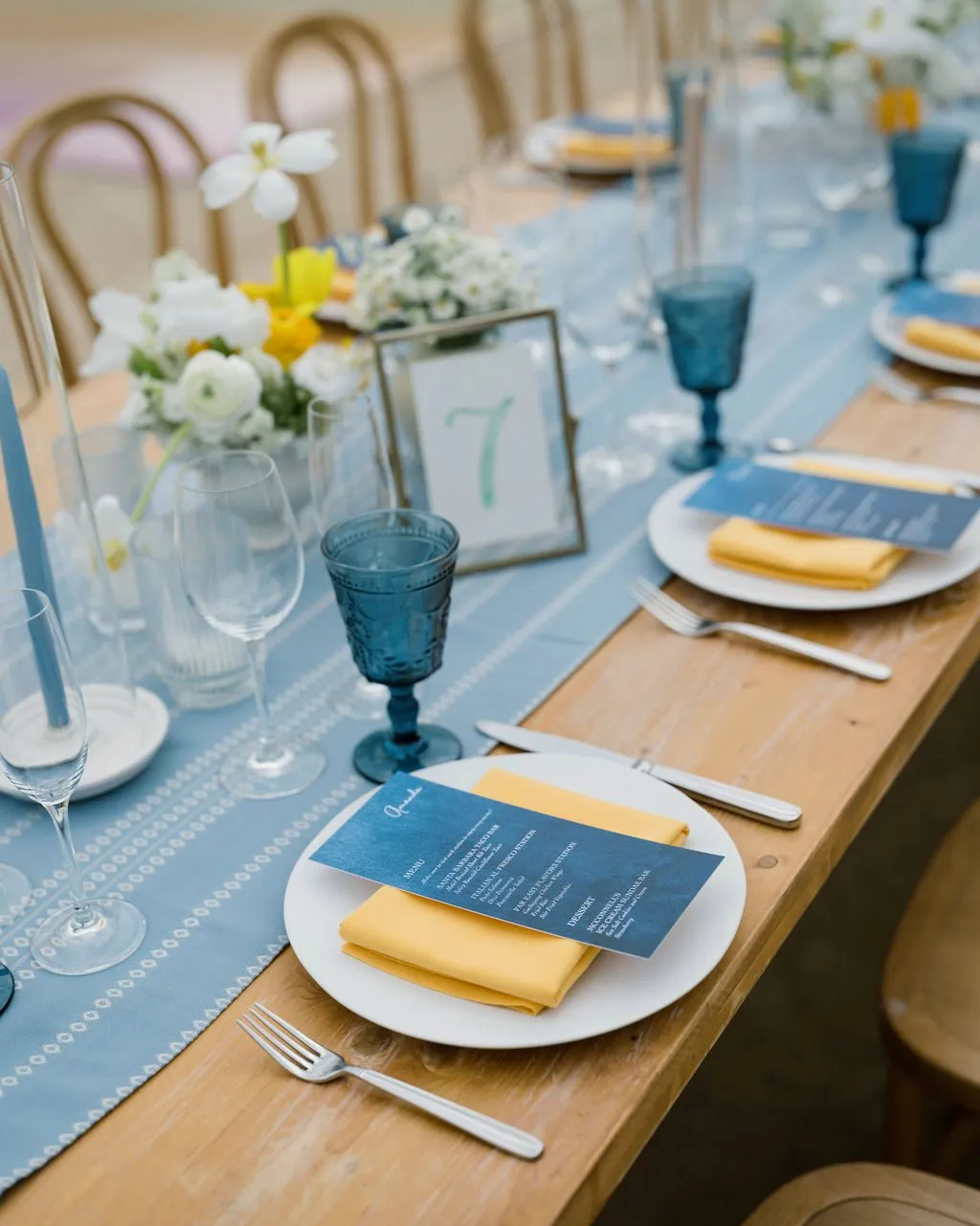
Napkins, runners, and overlays are essential elements in table decor. They complement the overall design and enhance the dining experience. These items work together to create a cohesive look, much like how a steak knife and dessert spoon complete a cutlery set.
Table runners add a layer of elegance, serving as a foundation for centerpieces and other decorative elements. They can be paired with overlays to create depth and texture, similar to how butter enhances the flavor of a dish.
Napkins play a dual role in table settings, offering both functionality and style. They can be folded into intricate shapes or simply placed alongside the plate, adding a finishing touch to the table decor. Like an oyster fork, napkins are small but significant details that elevate the dining experience.
Choosing the Right Napkins for Your Table Setting
Selecting the right napkins involves considering fabric textures, colors, and folding techniques to enhance table aesthetics. Event planners can explore various materials, from paper to eco-friendly options, to match their interior design vision. Creative folding and using napkin rings add elegance, while color choices can complement or contrast with other table elements, much like crafting the perfect recipe for a memorable dining experience.
Exploring Different Fabrics and Textures of Napkins
Event planners can select from a variety of napkin fabrics and textures to enhance their table settings. Cotton, linen, and polyester are popular choices, each offering unique qualities that complement different party themes. For example, lace napkins add a touch of elegance to formal dinners, while durable polyester options are ideal for outdoor events where red wine spills might occur. The texture of the napkin can also influence the overall dining experience, from the smooth feel of satin against the skin to the rustic charm of burlap next to a fish fork on a farmhouse-style menu.
The Impact of Color on Napkin Selection
Color plays a crucial role in napkin selection, influencing the overall ambiance of the table setting. Event planners can use napkin colors to complement or contrast with other elements, such as placemats, tablecloths, or centerpieces. For instance, a bold red napkin can add a pop of color to a neutral table, while a soft pastel hue can create a more subdued atmosphere. The color choice can also affect the visibility of utensils like soup spoons and steak knives, making them stand out or blend in with the table decor. Additionally, napkin rings in coordinating or contrasting colors can further enhance the visual appeal, tying together the entire place setting from the juice glass to the dinner plate.
Creative Folding Techniques to Impress Guests
Event planners can impress guests with creative napkin folding techniques that transform simple linens into eye-catching centerpieces. From elegant swans to festive Christmas trees, these folds add a touch of sophistication to any table setting. Planners can experiment with different shapes, such as fans or roses, to complement various themes and occasions. For a unique twist, they might incorporate sequin-adorned napkins or use unconventional materials like kitchen towels to create conversation-starting designs. The art of napkin folding extends beyond aesthetics, as certain folds can cleverly conceal utensils like soup spoons, adding an element of surprise to the dining experience:
- Choose appropriate napkin size and material
- Select a folding technique that matches the event theme
- Practice the fold to ensure consistency across all place settings
- Consider using napkin rings or holders to enhance the presentation
- Coordinate napkin colors with other table elements for a cohesive look
Using Napkin Rings for Added Elegance
Napkin rings add a touch of sophistication to table settings, elevating the dining experience beyond the essentials of entrée plates and champagne glasses. These decorative accessories can complement other table elements, such as candles or teaspoons, creating a cohesive look. Event planners often choose napkin rings that match the overall theme, using materials like metal, wood, or even crystals to enhance the elegance of the table decor, making each place setting as inviting as a perfectly poured glass of sherry.
Incorporating Eco-Friendly Napkin Options
Event planners can incorporate eco-friendly napkin options to create sustainable table settings. Reusable cloth napkins made from organic cotton or bamboo offer a luxurious feel while reducing waste. For casual events, biodegradable paper napkins with floral designs can complement tea service or cookie platters. These environmentally conscious choices not only enhance the meal experience but also align with modern sustainability trends:
- Select organic, locally-sourced materials for napkins
- Use plant-based dyes for colorful, eco-friendly options
- Consider bamboo or hemp napkins for durability and sustainability
- Opt for reusable napkins to minimize waste
- Choose napkins that complement other eco-friendly tableware, such as compostable plates and saucers
Selecting Table Runners to Enhance Your Setup
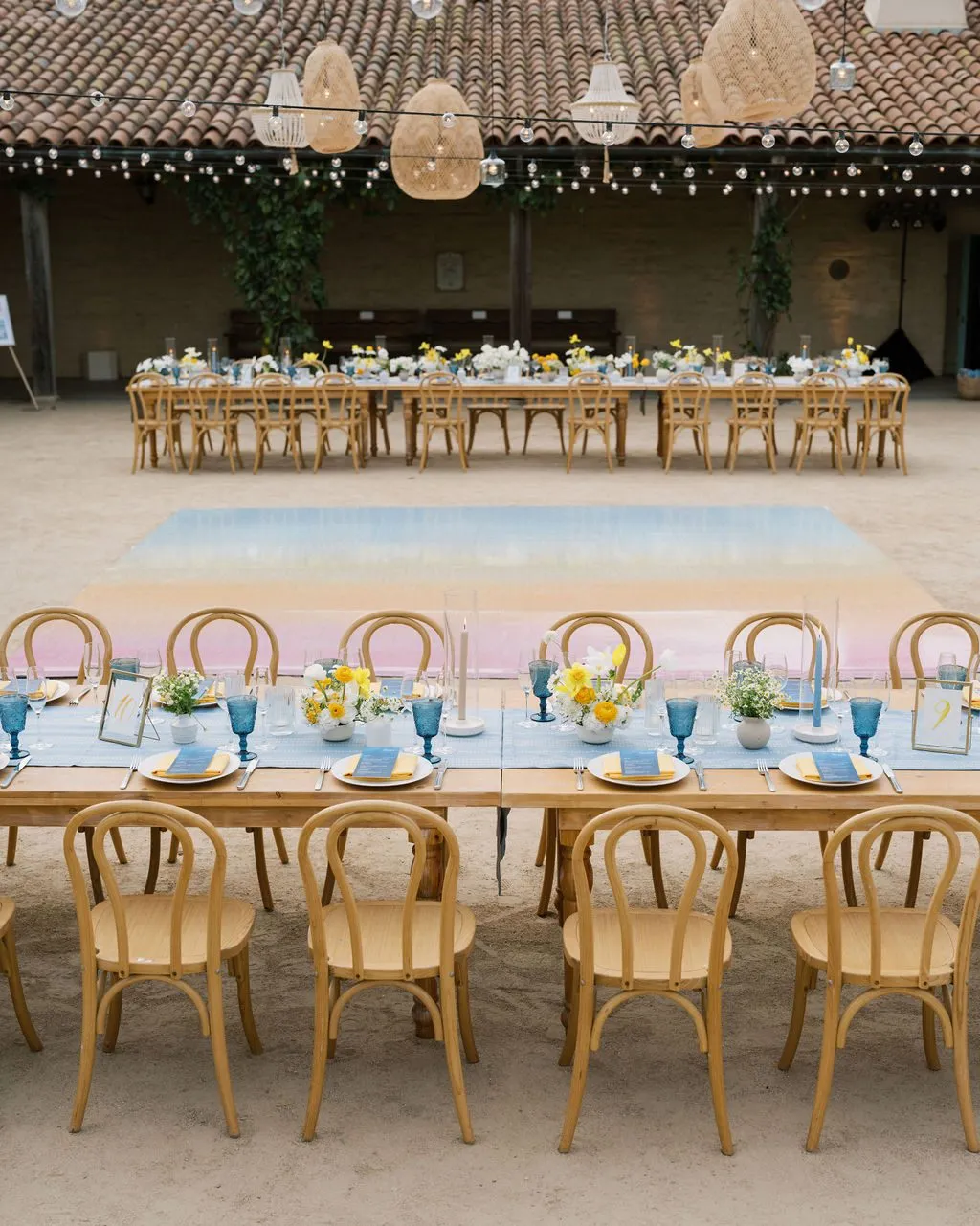
Table runners are versatile decorative elements that enhance table setups. They come in various types, each serving unique purposes. Layering runners adds depth and interest to the tableware arrangement. Matching runners with themes and tableware, such as silver cocktail glasses or champagne flutes, creates cohesive designs. Patterns in the runner enhance the aesthetics, while seasonal options allow for easy decor updates. Event planners can use runners to elevate settings from casual pastry displays to formal dinners.
Types of Table Runners and Their Uses
Table runners come in various styles and materials, each serving a specific purpose in event decor. Satin runners add a touch of elegance to wedding receptions, complementing glassware and creating a luxurious backdrop for place settings. For casual events, burlap or linen runners offer a rustic charm, perfect for supporting coffee cups and dessert plates. Event planners often choose runners that match the overall theme, considering factors such as table manners and dining etiquette when selecting the appropriate length and width.
Layering Runners for Depth and Interest
Layering runners adds depth and visual interest to table settings, creating a luxurious foundation for other decor elements. Event planners can combine different textures, such as pairing a linen runner with a cotton overlay, to enhance the tactile experience for guests. This layering technique provides a perfect backdrop for placing salt and pepper shakers, bread baskets, and other dining essentials, while also complementing the chair designs and overall room aesthetics.
Matching Runners With Tableware and Theme
Event planners match table runners with tableware and themes to create cohesive designs. For holiday gatherings, rich red runners complement festive china patterns, while neutral-toned runners provide an elegant backdrop for chocolate cakes at dessert parties. Coordinating runners with tablecloths enhances the overall aesthetic, creating a polished look that ties together all elements of the table setting:
- Select runner colors that complement or contrast with china patterns
- Choose textures that enhance the theme (e.g., velvet for winter, linen for summer)
- Consider the length of the runner in relation to the tablecloth and table size
- Incorporate seasonal elements into runner designs for holiday events
- Use runners to create visual separation between place settings and serving areas
The Role of Patterns in Table Runner Design
Patterns play a crucial role in table runner design, enhancing the overall aesthetic of the table setting. Event planners carefully select patterns that complement the event’s theme and tableware, considering the design elements such as flutes and butter knives. From subtle stripes to bold florals, patterns can create visual interest and tie together different aspects of the table decor. The choice of pattern also influences the perceived formality of the event, with intricate designs often associated with more elegant affairs where proper etiquette is observed:
- Choose patterns that complement the event theme and tableware
- Consider the scale of the pattern in relation to table size
- Use patterns to create visual flow across the table
- Balance patterned runners with solid-colored linens for contrast
- Incorporate seasonal motifs for holiday or themed events
Seasonal Runners to Switch Up Your Decor
Seasonal table runners offer an effortless way to refresh dining room decor throughout the year. Event planners can incorporate autumnal hues and pumpkin motifs for fall gatherings, while crisp white runners adorned with snowflakes set the stage for winter celebrations. In spring, floral patterns on delicate porcelain-inspired fabrics bring a touch of nature to the table, complementing water glasses and fresh centerpieces. These versatile decor elements allow hosts to transform their tables with minimal effort, creating a tailored atmosphere for each season’s unique dining experiences.
Utilizing Overlays to Create Visual Interest

Overlays add depth and visual interest to table settings, enhancing themes from baby showers to wine tastings. Event planners can choose complementary overlays, mix textures, and layer stylishly to create unique looks. Transparency in overlays affects lighting and color schemes, while customization adds a personal touch. These versatile elements work with other table decor to create stunning presentations that elevate the dining experience.
How to Choose Overlays That Complement Your Theme
Event planners select overlays that complement themes by considering the occasion and color scheme. For a birthday celebration, a shimmering overlay adds sparkle to table settings, enhancing the festive atmosphere around fruit platters and wine glasses. Crystal accents on overlays can reflect light, creating a magical ambiance that pairs well with formal place settings, including ornate forks and elegant stemware. When choosing overlays, planners consider the following factors:
- Event type (e.g., wedding, corporate dinner, holiday party)
- Color palette of the overall decor
- Texture and material of the base tablecloth
- Lighting conditions in the venue
- Compatibility with centerpieces and place settings
Mixing Textures With Overlays for a Unique Look
Event planners mix textures with overlays to create unique table settings that engage guests’ senses. They might pair a sheer lace overlay with a solid base tablecloth, adding depth and sophistication to the dining experience. This combination complements both casual stoneware dishes and elegant crystal stemware for white wine. Planners consider the interplay of textures when placing items like salt and pepper shakers or specialized utensils such as fish knives on the table. The careful selection of overlay textures can influence the perceived value of the event, potentially justifying a higher price point for premium experiences:
| Overlay Texture | Base Tablecloth | Effect |
|---|---|---|
| Lace | Solid Satin | Romantic Elegance |
| Sequin | Matte Polyester | Glamorous Contrast |
| Burlap | Smooth Linen | Rustic Charm |
Practical Tips for Layering Overlays Stylishly
Event planners can layer overlays stylishly by considering the table setting’s overall composition. They might start with a solid-colored base tablecloth, then add a patterned overlay that complements the centerpiece, such as a tulip arrangement. Careful placement of the overlay ensures it doesn’t interfere with place settings or obstruct access to salad bowls. Planners often use overlays to create visual zones on the table, separating dining areas from spaces reserved for displaying guests’ email addresses or event information.
The Effect of Transparency in Overlay Choices
Transparency in overlay choices significantly impacts the overall aesthetic of table settings. Sheer overlays allow the base tablecloth color to shine through, creating a soft, pastel effect that complements delicate vases and cheese platters. Event planners often select transparent overlays to add depth without overwhelming the table, ensuring that napkin colors and centerpieces remain visible. This subtle layering technique enhances the visual appeal of the table while maintaining a light, airy atmosphere that suits a variety of event styles.
Customizing Overlays for Personal Touch
Event planners can customize overlays to add a personal touch to table settings, creating unique and memorable experiences for guests. By incorporating monograms, company logos, or event-specific designs, they transform standard overlays into bespoke decor elements that reflect the host’s personality or brand identity. These customized overlays serve as conversation starters, enhancing the overall ambiance and making each table setting feel special and thoughtfully curated.
Combining Napkins, Runners, and Overlays for Cohesive Decor
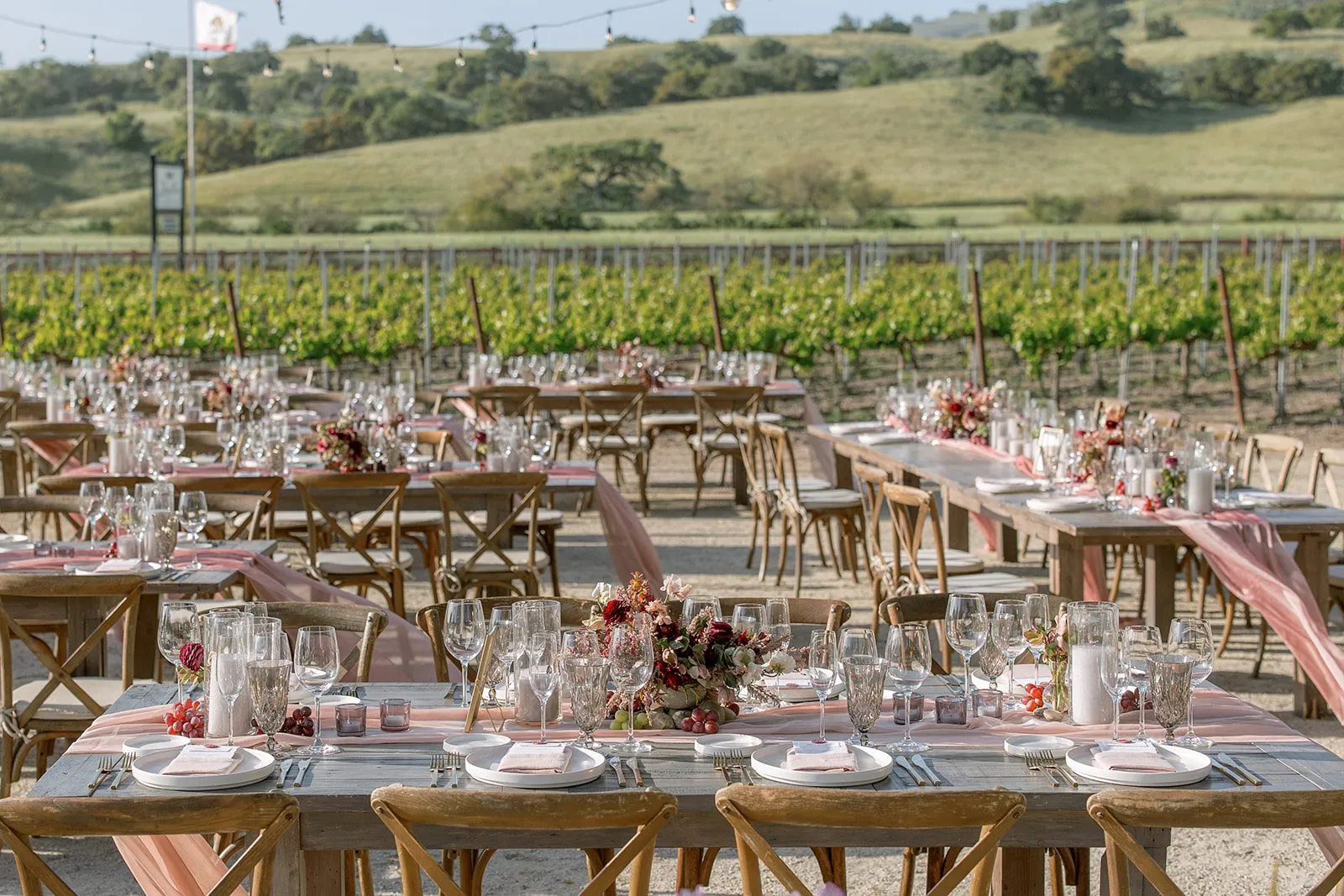
Combining napkins, runners, and overlays creates cohesive table decor. This section explores color palette selection, pattern balancing, and proportional layering. It offers tips for multi-layered settings and showcases real-life examples. By mastering these elements, event planners can craft polished, visually appealing table designs that enhance the dining experience.
Creating a Color Palette That Ties Elements Together
Event planners create cohesive color palettes by carefully selecting napkins, runners, and overlays that complement each other and the overall theme. They consider the venue’s existing colors, the season, and the event’s mood when choosing hues. A well-crafted color scheme ties all table elements together, creating a harmonious and visually appealing setting. Planners often use a base color for tablecloths, then add depth with runners and overlays in coordinating shades, finishing with napkins that either match or provide a striking contrast:
- Choose a primary color that reflects the event’s theme
- Select complementary or contrasting colors for accents
- Use neutral tones as a foundation for bolder color choices
- Consider the psychological impact of colors on guests’ moods
- Test color combinations in different lighting conditions
Balancing Patterns for a Polished Appearance
Event planners balance patterns when combining napkins, runners, and overlays to achieve a polished appearance. They often pair patterned runners with solid-colored napkins or vice versa to avoid visual clutter. When using multiple patterns, planners ensure they vary in scale, such as pairing a large floral print overlay with a smaller geometric pattern on napkins. This careful coordination creates visual interest without overwhelming the table setting, allowing each element to complement rather than compete with others.
The Importance of Proportions in Layering
Proper proportions are crucial when layering napkins, runners, and overlays for cohesive table decor. Event planners carefully consider the size of each element in relation to the table dimensions and place settings. A well-proportioned layout ensures that runners extend just the right amount beyond the table edges, overlays drape elegantly without overwhelming the space, and napkins are folded to complement rather than dominate the place setting. By maintaining balanced proportions, planners create visually appealing table designs that enhance the overall dining experience.
Tips for Creating a Multi-Layered Table Setting
Event planners create multi-layered table settings by carefully combining napkins, runners, and overlays. They start with a base tablecloth, then add a contrasting runner for visual interest. Overlays are placed strategically to create depth, while napkins are folded or arranged to complement the overall design. Planners consider color coordination, texture variation, and pattern balance to achieve a cohesive look. They also ensure that each layer serves a purpose, whether functional or aesthetic, to avoid cluttering the table.
Frequently Asked Questions About Table Decor
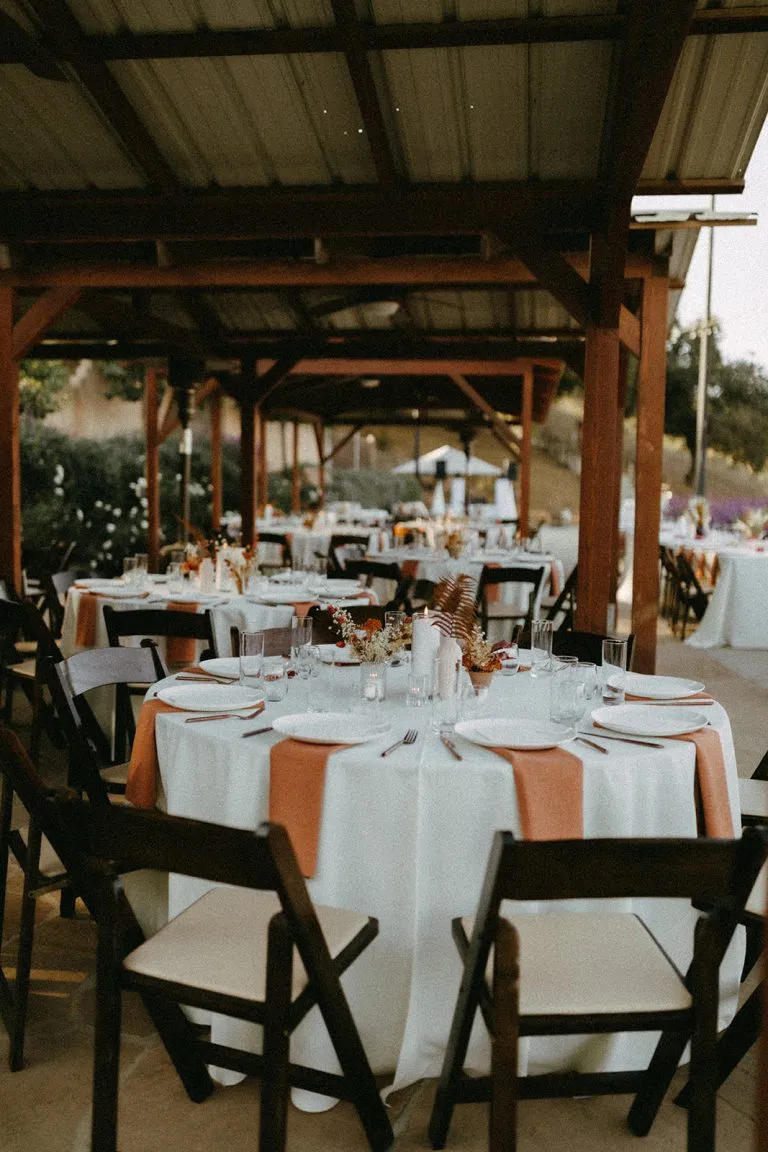
This section addresses common questions about table decor, covering best practices, care instructions, and cost-effective ideas. Event planners will find guidance on choosing the right decor for various events, including tips on using paper napkins elegantly. These practical insights help create stunning table settings while maintaining budget considerations.
What Are the Best Practices for Table Decor?
Best practices for table decor include selecting a cohesive color scheme, balancing textures, and ensuring proper proportions. Event planners should consider the event type and venue when choosing napkins, runners, and overlays, aiming for a harmonious blend that enhances the overall atmosphere. They should also pay attention to the practicality of their choices, ensuring that the decor doesn’t interfere with guests’ comfort or dining experience.
How to Clean and Care for Napkins, Runners, and Overlays
Proper cleaning and care of napkins, runners, and overlays extends their lifespan and maintains their appearance. Event planners should follow care instructions specific to each fabric type, using gentle detergents for delicate materials and treating stains promptly. For storage, they recommend rolling fabric items rather than folding to prevent creases and storing them in a cool, dry place to avoid mildew. Regular inspection and repair of any tears or loose threads ensures these decor elements remain in top condition for future events.
Can I Use Paper Napkins as an Elegant Option?
Paper napkins can be an elegant table decor option when chosen and presented thoughtfully. Event planners often select high-quality, thick paper napkins with subtle textures or embossed patterns to elevate the look. These napkins can be folded into sophisticated shapes or paired with elegant napkin rings to create a refined appearance. For a more upscale feel, planners might opt for paper napkins with metallic accents or custom-printed designs that complement the event theme:
- Choose thicker, higher-quality paper napkins
- Select napkins with subtle textures or embossed patterns
- Use sophisticated folding techniques
- Pair with elegant napkin rings
- Consider napkins with metallic accents or custom prints
How to Choose the Right Table Decor for Events
Event planners select the right table decor by considering the event’s theme, venue, and guest expectations. They assess the formality of the occasion to determine appropriate fabric choices, colors, and patterns for napkins, runners, and overlays. Planners also factor in practical considerations such as table size, lighting conditions, and the need for durability in outdoor settings. By balancing aesthetics with functionality, they create table settings that enhance the overall event experience while meeting logistical requirements.
Cost-Effective Ideas for Table Setting Enhancements
Event planners can implement cost-effective ideas for table setting enhancements without compromising on the style. They often use creative folding techniques for inexpensive paper napkins to add visual interest or repurpose everyday items like ribbons or twine as napkin rings. Mixing and matching different textures of runners and overlays from existing inventory can create unique looks without additional expenses. Planners may also opt for versatile, neutral-colored linens that can be dressed up with seasonal accents or DIY centerpieces, maximizing their use across various events:
| Cost-Effective Idea | Implementation | Benefit |
|---|---|---|
| Creative Napkin Folding | Use simple paper napkins in intricate designs | Adds elegance without high cost |
| DIY Napkin Rings | Craft rings from ribbons or natural materials | Personalized touch at minimal expense |
| Mix and Match Linens | Combine existing runners and overlays | Creates new looks without new purchases |
Inspiring Table Decor Ideas for Various Occasions
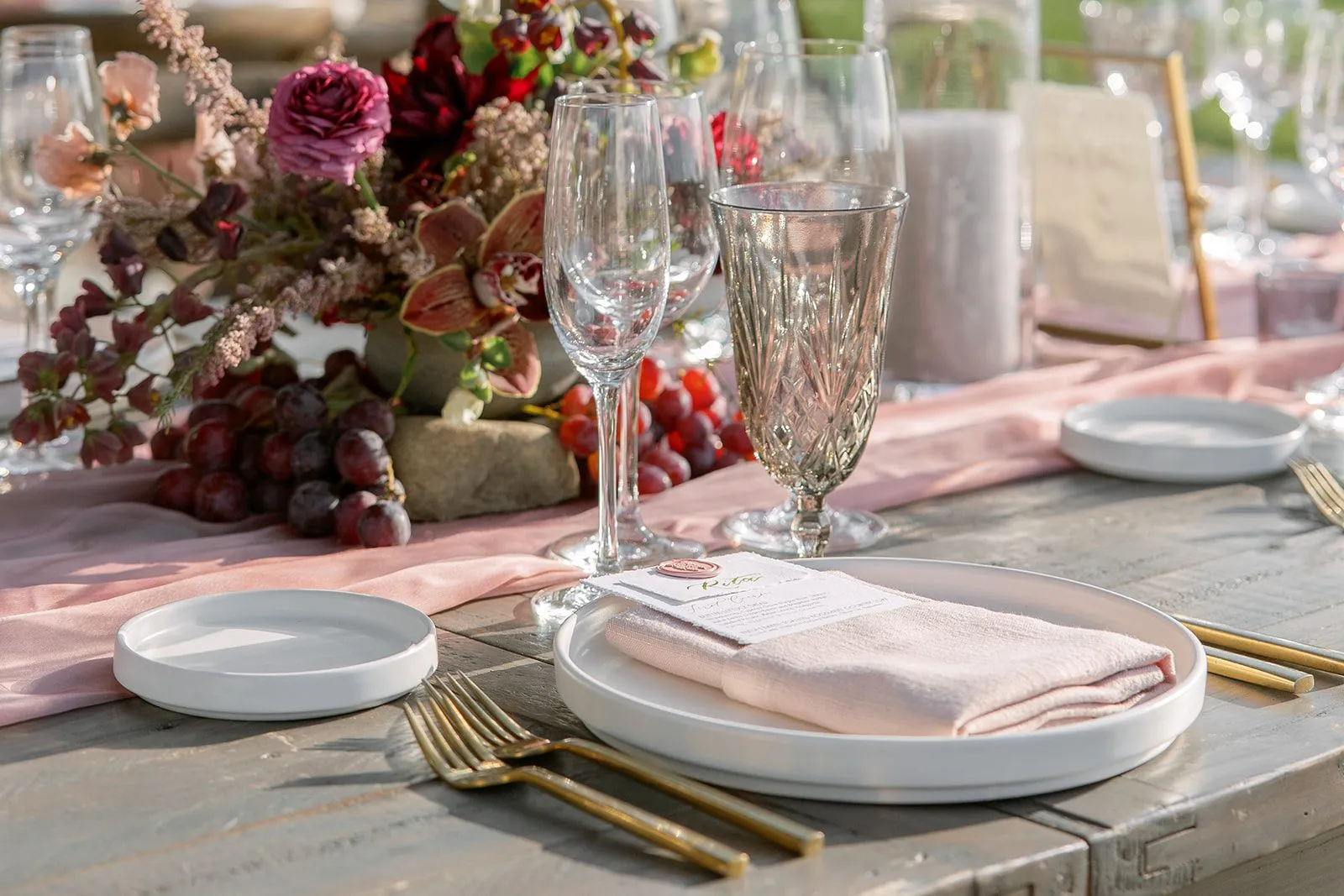
This section explores inspiring table decor ideas for various occasions, offering event planners a wealth of creative options. From seasonal holiday settings to elegant wedding designs, casual everyday arrangements, and unique themed concepts, these ideas showcase the versatility of napkins, runners, and overlays. Planners will discover tips for personalizing table decor, ensuring each celebration reflects the host’s style and the event’s significance.
Seasonal Inspirations for Holiday Table Settings
Event planners create enchanting holiday table settings by incorporating seasonal elements into napkins, runners, and overlays. For winter celebrations, they might pair crisp white tablecloths with shimmering silver runners and deep red napkins, evoking the colors of holly berries and snow. Autumn gatherings call for warm, earthy tones, with planners using burnt orange runners atop rustic burlap overlays, complemented by napkins in rich harvest hues. These seasonal inspirations transform dining tables into festive focal points, setting the mood for memorable holiday meals:
- Choose colors that reflect the season’s palette
- Incorporate natural elements like pinecones or autumn leaves
- Use textured fabrics to add depth and warmth
- Layer different materials for a more dynamic look
- Add metallic accents for a touch of holiday sparkle
Creating Elegant Settings for Weddings and Formal Events
Event planners create elegant settings for weddings and formal events by carefully selecting luxurious napkins, runners, and overlays. They often choose delicate fabrics like silk or lace for an upscale feel, pairing them with metallic accents to add sophistication. Planners may layer multiple textures, such as a sheer organza overlay atop a satin tablecloth, to create depth and visual interest. The color palette typically aligns with the wedding theme or formal event’s dress code, ensuring a cohesive and refined atmosphere:
| Event Type | Tablecloth | Runner | Overlay | Napkin |
|---|---|---|---|---|
| Classic Wedding | White Satin | Silver Sequin | Sheer Organza | Ivory Linen |
| Black Tie Gala | Black Velvet | Gold Embroidered | Lace | White Silk |
Casual Table Decor Ideas for Everyday Dining
Event planners create casual table decor for everyday dining by using versatile napkins, runners, and overlays that enhance the meal experience without feeling overly formal. They often select machine-washable fabrics in neutral colors that can be easily mixed and matched, allowing for quick updates to the table’s look. Planners might suggest using natural textures like linen or cotton for a relaxed atmosphere, and incorporating seasonal elements through simple centerpieces or napkin folds. These casual settings prioritize comfort and practicality while still maintaining an inviting aesthetic:
- Choose durable, easy-care fabrics for frequent use
- Opt for neutral color palettes that can be easily accessorized
- Use placemats instead of full tablecloths for a more relaxed feel
- Incorporate natural elements like potted herbs or seasonal fruits
- Select napkins in complementary colors for a cohesive look
Unique Themes to Inspire Your Decor Choices
Event planners can draw inspiration from unique themes to create memorable table decor. They might design a “Journey Around the World” setting, using napkins featuring international landmarks, runners with map prints, and overlays in colors representing different countries. For a “Vintage Glamour” theme, planners could combine lace overlays with satin runners and napkins adorned with art deco patterns. These creative themes allow for personalized touches that reflect the host’s interests or the event’s purpose:
- Choose a theme that resonates with the event’s purpose
- Select fabrics and patterns that align with the chosen theme
- Incorporate thematic elements into napkin folds or centerpieces
- Use color schemes that support the overall concept
- Add themed accessories to enhance the table’s storytelling
Tips to Personalize Table Decor for Special Celebrations
Event planners personalize table decor for special celebrations by incorporating elements that reflect the host’s personality or the event’s significance. They often use custom-printed napkins featuring monograms, dates, or meaningful quotes to add a personal touch. Planners may suggest creating unique runners using family photos or incorporating heirloom textiles as overlays to infuse the table with sentimental value. These personalized touches transform standard table settings into memorable centerpieces that resonate with guests:
| Personalization Idea | Implementation | Effect |
|---|---|---|
| Custom-printed Napkins | Monograms or Quotes | Adds Personal Touch |
| Photo Runners | Family Images | Creates Nostalgia |
| Heirloom Overlays | Vintage Textiles | Infuses Sentiment |
Conclusion
Mastering the art of table decor with napkins, runners, and overlays allows event planners to create stunning, personalized settings that elevate any occasion. By carefully selecting and combining these elements, planners can enhance the overall ambiance, reflect event themes, and leave lasting impressions on guests. The versatility of these decor items enables creative expression across various events, from formal weddings to casual gatherings, while also offering cost-effective solutions for budget-conscious hosts. Ultimately, the thoughtful use of napkins, runners, and overlays transforms tables into captivating focal points, demonstrating that attention to small details can significantly impact the success of any event.






